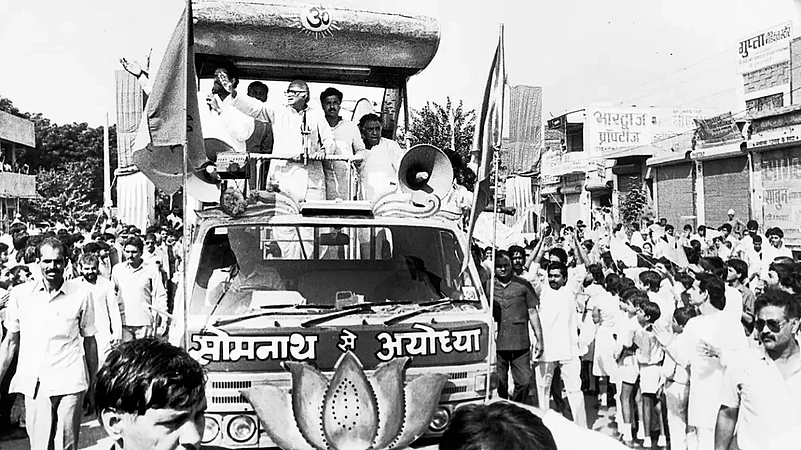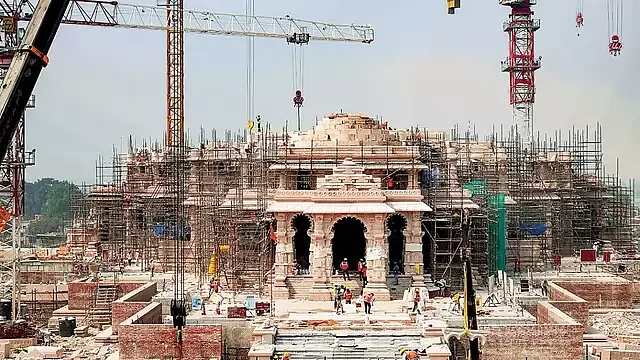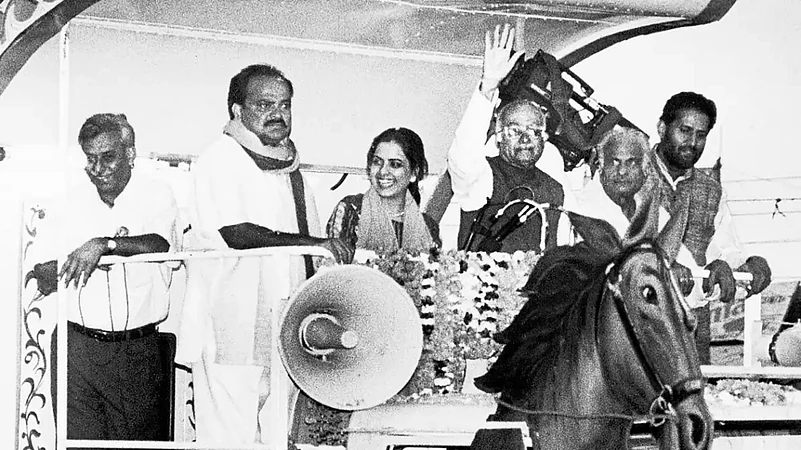1947
From Babri Masjid To Inauguration Of Ram Mandir – Making Of A Milestone
Tracing the long journey towards the establishment of the Ram temple in Ayodhya

A local court designates the Sunni Waqf Board, rather than the Shia Waqf Board, as having authority over the Babri Masjid.
1949
Idols placed inside the mosque sparking a dispute. Both parties file civil suits. The court orders locking the gates, citing the matter as sub judice.

December 22, 1949
District Magistrate K K Nayar declines to remove idols of Ram placed inside the mosque by Hindu Mahasabha members. The mosque comes under lock and key, initiating a legal battle.
1950
Muslim and Hindu parties file suits in the Faizabad court, requesting permission for namaz and prayers. An interim injunction allows a pujari, but forbids entry to others.

1959
Nirmohi Akhara, led by Mahant Bhaskar Das, files a suit asking for pujas to be conducted on the disputed site.
1961
The Uttar Pradesh Sunni Central Waqf Board files a suit asking for Muslims to be allowed to pray in the mosque.
1981
The Sunni board files for possession of the site.
1984
L K Advani leads the Ram Janmabhoomi movement, boosting the BJP’s prominence. The gates of the Babri Masjid are unlocked, sparking protests.

1989
The Allahabad High Court orders maintenance of status quo. The Rajiv Gandhi government permits the Vishva Hindu Parishad (VHP) to perform shilanyas on the disputed land.

September 25, 1990
Advani launches the Rath Yatra, and is arrested later. Communal clashes erupt.
October 30, 1990, and November 2, 1990
The Uttar Pradesh police fires upon the kar sevaks when they gather near the Ram Janmabhoomi site and start approaching the campus of the Babri Masjid.
1991
The BJP becomes the second-largest party in the Lok Sabha. Kalyan Singh heads the BJP government in Uttar Pradesh.

December 6, 1992
Babri Masjid is demolished, leading to communal violence. FIRs are filed against kar sevaks and leaders including Advani, M M Joshi and Uma Bharti.
December 8, 1992
Muslims in Pakistan attack Hindu temples in protest.
December 16, 1992
The Liberhan Commission is established to investigate the case.

1993
The Narasimha Rao government acquires the land around the Babri Masjid. Charges are filed against Advani and others.

1994
The Supreme Court finds Kalyan Singh guilty.
2001
The special CBI court drops charges against Advani and others.
2002
Prime Minister A B Vajpayee initiates talks. The Allahabad High Court directs excavation by the Archaeological Survey of India (ASI).

2003
The ASI reports evidence of a 10th century temple beneath the mosque. The CBI special court orders trial against seven Hindutva leaders.
November 2004
An Uttar Pradesh court reviews earlier order exonerating Advani.
July 5, 2005
Lashkar-e-Taiba terrorists attack the Ram Janmabhoomi complex.
June 30, 2009
The Liberhan Commission implicates BJP and VHP leaders.

May 9, 2011
The Supreme Court suspends the ruling of the Allahabad High Court.
2016
Subramanian Swamy files a plea for Ram temple construction.

2017
Advani, Joshi, and Uma Bharti face charges. Trial is ordered to be completed in two years.
2018
The Supreme Court hears civil appeals in a title dispute.
2019
A Constitution Bench is formed to hear the title dispute. Primary Muslim litigant offers to drop appeals.

November 9, 2019
The Supreme Court grants disputed land to Hindu parties and allocates five acres in Dhannipur village of Faizabad to the Sunni Waqf Board.
February 5, 2020
The Union Cabinet, chaired by Prime Minister Narendra Modi, approves the establishment of the Shri Ram Janmabhoomi Teerth Kshetra Trust. This trust is tasked with overseeing the construction of the Ram temple at the historic site in Ayodhya. Modi officially announces this development in the Lok Sabha, marking a significant step towards the realisation of a longstanding cultural and religious aspiration.

February 24, 2020
The Uttar Pradesh Sunni Central Waqf Board accepts land allocation of five acres from the state government. This land is designated for the construction of a mosque.
May 8, 2020
The Supreme Court extends trial completion time.

August 5, 2020
Modi, in a momentous event, lays the foundation stone for the Ram temple in Ayodhya. The ceremony marks a symbolic and historic milestone, signifying the beginning of the actual construction process.

September 30, 2020
The special CBI court acquits all 32 accused in the Babri Masjid demolition case.
January 22, 2024
Date set for Modi to officially inaugurate the temple in Ayodhya.
(Compiled by Vikram Raj)
(This appeared in the print as 'Making Of A Milestone')
- Previous Story
 Election Results: NC-Congress Set To Return In J&K, BJP Defies Exit Polls In Haryana
Election Results: NC-Congress Set To Return In J&K, BJP Defies Exit Polls In Haryana - Next Story






















